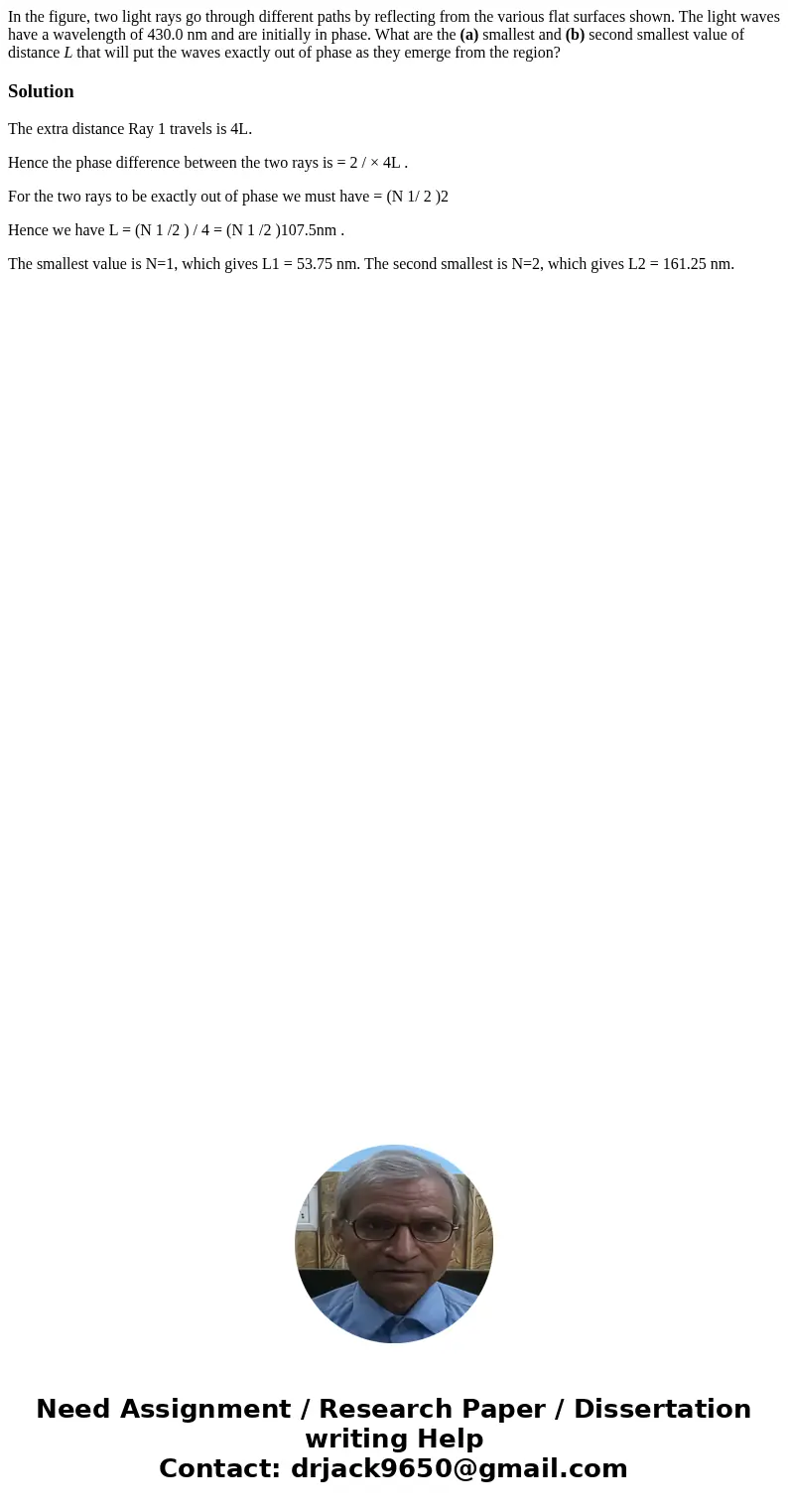In the figure two light rays go through different paths by r
In the figure, two light rays go through different paths by reflecting from the various flat surfaces shown. The light waves have a wavelength of 430.0 nm and are initially in phase. What are the (a) smallest and (b) second smallest value of distance L that will put the waves exactly out of phase as they emerge from the region?
Solution
The extra distance Ray 1 travels is 4L.
Hence the phase difference between the two rays is = 2 / × 4L .
For the two rays to be exactly out of phase we must have = (N 1/ 2 )2
Hence we have L = (N 1 /2 ) / 4 = (N 1 /2 )107.5nm .
The smallest value is N=1, which gives L1 = 53.75 nm. The second smallest is N=2, which gives L2 = 161.25 nm.

 Homework Sourse
Homework Sourse